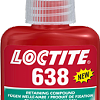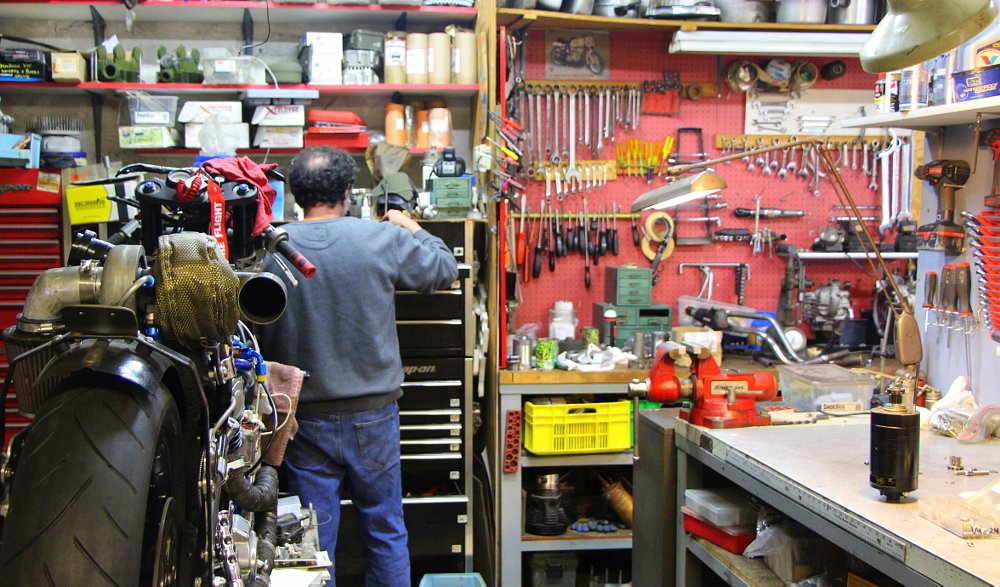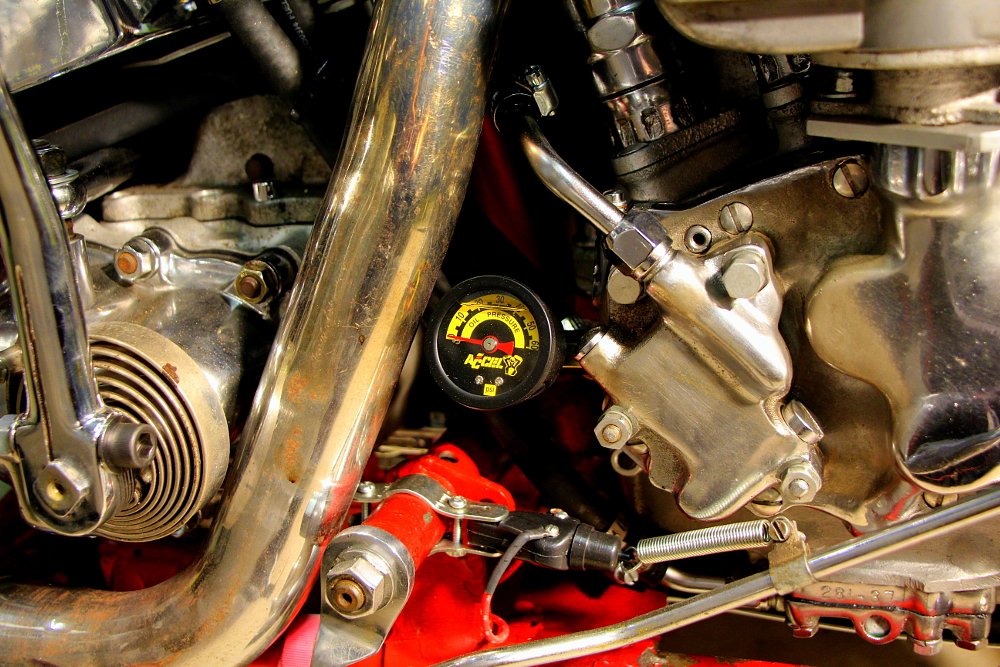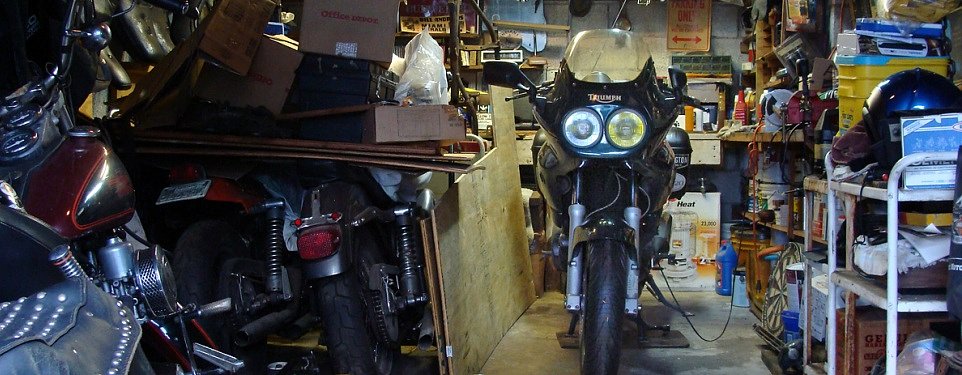This started out as a tech article about how to fix a wallered-out hub, but it morphed into a search for other solutions and in the end led me to a discovery about KTM parts interchangeability that's kinda nifty.
Let me explain. A friend of mine sold me a dirtbike a few months back. He had done lots of work to it, but it still needed some mechanical lovin's. One of the items it needed was a set of wheel bearings put into the rear 18-inch wheel.

I ordered up some bearings and seals, and started disassembling things. Shit got kind of ugly in there. In removing the final bearing, I hit it with a drift and suddenly, an explosion happened on the workbench. The shattered components that once made up a wheel bearing puked out of my delicate hub in a spray of rust-colored dust and ball bearings.
After assessing the situation, I came to the determination that the bearing had gotten contaminated with moisture and slowly ground itself to dust. This KTM, a 2006 XC-W, uses cartridge bearings, which are pretty standard — they’re an interference fit in the aluminum hub. Well, when I was examining the debris from the removal process, I saw a rusty, thin piece of metal in the mix. I groaned. I’ve done this job once or twice before, and I knew that piece of metal was not from a bearing. My suspicion was that it was a shim, and I confirmed that when I literally dropped a new bearing into the hub. (They’re supposed to be a nice tight press fit.)
Here’s the problem, for those of you who have never replaced wheel bearings. Once the bearing loosens, it can spin in its housing, which, in this case is the hub. The hub is soft aluminum, but the bearing’s outer race is super-hard steel. Eventually the fit gets sloppy enough that the wheel has detectable movement. Just a few millimeters at the hub translates to a lot of slop at the tire!
What the enterprising Previous Owner had done was to attempt to restore the previously tight fit by shimming the bearing. Rather than shim evenly all the way around the outer race with thinner stock, he took the one thick piece he had and jammed it in on one side. The fit was restored to some degree, but because the bearing was no longer concentric with the hub’s bore, it was stressed from the get-go. This hub, sad to say, was junk.

The poor-boy way to “fix it up and make it go” is to take a punch and hammer dimples into the hub. The metal surrounding the dimple “raises up” and can sometimes get you by for a race or day in the woods. It’s not a permanent repair in almost all cases, but it beats staying home and gardening. This was not acceptable for me.

It’s also possible in some cases to put the hub in a lathe and remove enough material to fit an oversized bearing, if there’s enough meat available on the hub. This is a permanent, correct repair. I did not go this route simply because my hub did not have enough excess material to machine, in my layman’s opinion.
The next most frugal solution is to lace the existing rim to a new hub. I didn’t mind that idea, but I wasn’t sure if reusing spokes was permissible. I’ve laced lots of bicycle wheels, but not motorcycle wheels. I called up Buchanan's Spoke and Rim. In my estimation, these guys are the best in the biz. They're wizards. They can make any rim and any hub combo a reality. Robert Buchanan says that reusing spokes is permissible, provided the hub, spokes, and wheel are in great shape prior to disassembly. How's that for help? The guy didn't even try to sell me anything.
This was no solution for me, though, because several of my spokes were bent. The cost of a new hub plus spokes (plus an evening of my time!) made a new wheel look like like a more financially intelligent purchase.
So, I used my google-fu and lots of RevZilla time hunting down some wheels I could use on my bike. One of the things I was afraid of was not finding many spares for my bike, and that fear came to fruition. One of the other things I was a bit afraid of — as a man who knows a little bit about parts interchangeability on, say, old Harley-Davidsons — was not knowing what I could buy cheap that would either fit my bike directly or that I could make fit without spending ridiculous amounts of money or time.
Let’s rewind for a moment.

I’ve been farting around with this bike a little bit, and one of the things I liked about it immediately was that the wheel spacers don’t just sit on the axle. They are top-hat shaped, and fit into the bearing bores, which means you can set them up and the wheel just slips in and out. You don’t do that whole “balance-the-wheel-and-see-if-you-can-sneak-the-spacers-in-with-one-hand” dance many bikes require. In fact, the fit was so snug, I actually popped mine out with a drift. Hmm. So that means that the axle does not ride on the bores of the bearing inner races… the spacers do.
I wondered if they’re all very similar. I pulled up some parts fiches for various off-road bikes of varying years and found that KTM used the same hub for a very long time. The inner spacer (“Bearing distance tube.” Those Austrians have a different word for everything.) was also the same, leading me to believe that KTM was dealing with the changing widths of forks and swingarms by using different outer spacers. Talk about not “reinventing the wheel!”
A little more research led me to discover KTM was changing front and rear axle sizes, but the outer spacers seem to be the only part that appeared to have different part numbers. Because the inner spacer was consistent across all those years and models, I assumed that with the proper outer spacers, any wheel utilizing the same hub my wheel used could be easily made to fit nearly any KTM off-road bike.
I then started researching brakes, and because every rotor I found appeared to be perfectly flat (no offset), I deduced that all calipers were mounted at a consistent offset across the range. (I know, I am really stacking the assumptions up here!)
Back to eBay. I began hunting for KTM dirt wheels. I found a fellow selling a set of very lightly used 19-inch and 21-inch wheels. I asked the guy if he knew what they fit, but he hemmed and hawed a bit. He did have a lot of spare parts, though, and they had good tires on the wheels. Oh yeah, there were also rotors attached, too, and he had new pads! Sure, it was a motocross rear and I spend my whole off-road life on trails, but the price was just right for what I was getting. I dropped five hundo and ordered ‘em up.

The box showed up and the seller had included other goodies — a full set of rear bearings and seals, rear spokes, and front and rear brake rotors and pads. Also, I found two sets of outer spacers, front and rear, floating about in the shipping box. One set appeared to be for the early axles, and one set for the later ones.
I loaded up the new wheels with spacers for the old setup, and got cracking. Both ends of the bike got new pads and the fresh rotors. (Don’t forget to move the magnetic wheel speed sensor over if you’re changing rotors!) I installed my sprocket, cleaned up some parts, lubricated the brake calipers, and presto-change-o, my woods bike was wearing a spiffy new set of motocross wheels and tires! Not bad for $500. (Shipped, no less!)

If you followed this far, here is the takeaway: KTM hubs/rotor spacing/bearings interchange on all off-road models 125 cc to 520 cc from 2003 to 2017, front and rear. The only things needed to swap are the correct axle, spacers, rotor, and sprockets, confirmed by ZLA's media representative from KTM of North America. There are some other bikes outside those models that can work, but those are all a guaranteed fit.

What does this mean? Well, to me, it means I am more likely to buy an orange bike again. Any time I can reuse parts and accessories I have previously purchased, I’m a happy fellow. That interchangeability has a lot to do with why I’m so heavily invested in old Harley-Davidsons. It’s pretty nice to know that you can pick up spare wheels for a song and maybe even keep a set of wheels laced with street tires or trials tires for other-than-dirt usage. I’m sick of the manufacturers changing things every dang year and leaving me in a lurch to find parts. It also means that using your motocross bike as a woods machine becomes a bit easier because swapping an 18-inch wheel for a 19-inch is a cakewalk.
Swappable wheels and two-stroke power. What's not to love?
















